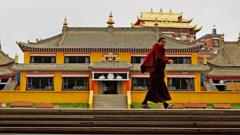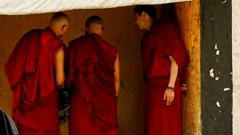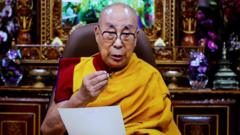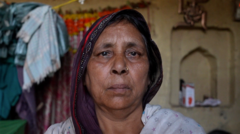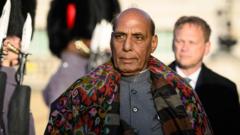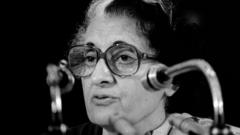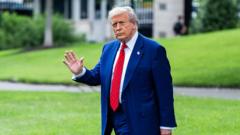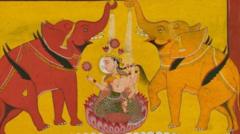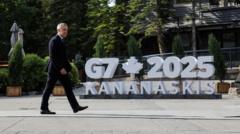In an atmosphere of devotion and hopeful curiosity, the Dalai Lama’s milestone birthday is marked by discussions of his future and the heir to the Tibetan Buddhism leadership legacy.
Dalai Lama Approaches 90: Potential Succession Discussion Looms

Dalai Lama Approaches 90: Potential Succession Discussion Looms
As the Dalai Lama celebrates his 90th birthday, the world waits in anticipation for potential insights into his succession plan.
Hundreds of followers have gathered in northern India for the Dalai Lama's 90th birthday celebrations, coinciding with the three-day 15th Tibetan Religious Conference. Anticipation swirls about the Dalai Lama potentially revealing information regarding his succession during this significant occasion. Although his office has mentioned an upcoming video message, specifics about its content remain unclear.
Having fled Tibet for India in 1959 after a failed uprising against Chinese governance, the Dalai Lama established a government-in-exile, becoming a spiritual leader and symbol of Tibet’s resilient identity. Celebrations commenced earlier in the week with over 7,000 guests, including notable supporters like Hollywood actor Richard Gere.
On the eve of his birthday, the Dalai Lama hinted at sharing a framework for the future of the Dalai Lama institution, without providing concrete details. In previous discussions, he offered varied views on succession, considering options such as a female successor or potentially not naming one at all. However, he has also indicated that if sufficient support exists among Tibetans-in-exile, a successor would be appointed, born outside China—a stance that has drawn ire from Beijing.
Experts note that if the current Dalai Lama identifies a successor, it may prompt China to attempt to appoint its own version, disregarding traditional Tibetan Buddhist selections.
Youdon Aukatsang, a member of the Tibetan parliament-in-exile, expressed cautious optimism but did not expect a definitive plan. He emphasized the role of the Dalai Lama as a unifying force in the Tibetan movement, stating the necessity of continuity and expressing concerns about the future without clear leadership.
Buddhist tradition holds that the reincarnation of the Dalai Lama is determined through specific signs, an act of crucial importance for Tibetans. The present Dalai Lama, born on July 6, 1935, was recognized as the 14th incarnation as a young child. Now, four years after relinquishing his political duties, he remains a vital spiritual figure.
The gathering also highlights the longing of Tibetan exiles for their homeland, with some expressing faith that they or future generations may return to Tibet one day. As discussions about succession and leadership heat up during this momentous occasion, the weight of the Dalai Lama’s legacy continues to linger heavily within the Tibetan community and beyond.
Having fled Tibet for India in 1959 after a failed uprising against Chinese governance, the Dalai Lama established a government-in-exile, becoming a spiritual leader and symbol of Tibet’s resilient identity. Celebrations commenced earlier in the week with over 7,000 guests, including notable supporters like Hollywood actor Richard Gere.
On the eve of his birthday, the Dalai Lama hinted at sharing a framework for the future of the Dalai Lama institution, without providing concrete details. In previous discussions, he offered varied views on succession, considering options such as a female successor or potentially not naming one at all. However, he has also indicated that if sufficient support exists among Tibetans-in-exile, a successor would be appointed, born outside China—a stance that has drawn ire from Beijing.
Experts note that if the current Dalai Lama identifies a successor, it may prompt China to attempt to appoint its own version, disregarding traditional Tibetan Buddhist selections.
Youdon Aukatsang, a member of the Tibetan parliament-in-exile, expressed cautious optimism but did not expect a definitive plan. He emphasized the role of the Dalai Lama as a unifying force in the Tibetan movement, stating the necessity of continuity and expressing concerns about the future without clear leadership.
Buddhist tradition holds that the reincarnation of the Dalai Lama is determined through specific signs, an act of crucial importance for Tibetans. The present Dalai Lama, born on July 6, 1935, was recognized as the 14th incarnation as a young child. Now, four years after relinquishing his political duties, he remains a vital spiritual figure.
The gathering also highlights the longing of Tibetan exiles for their homeland, with some expressing faith that they or future generations may return to Tibet one day. As discussions about succession and leadership heat up during this momentous occasion, the weight of the Dalai Lama’s legacy continues to linger heavily within the Tibetan community and beyond.

